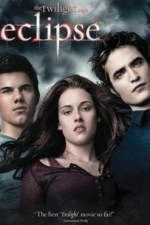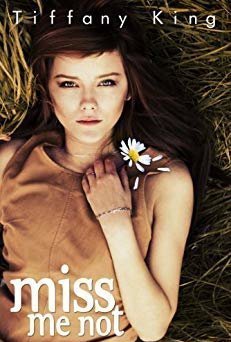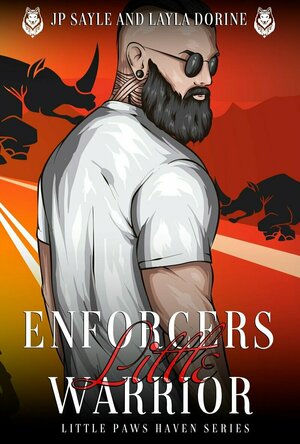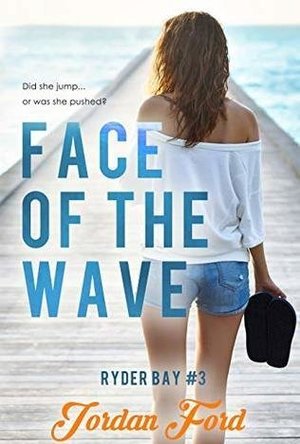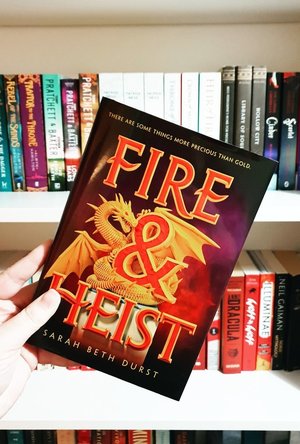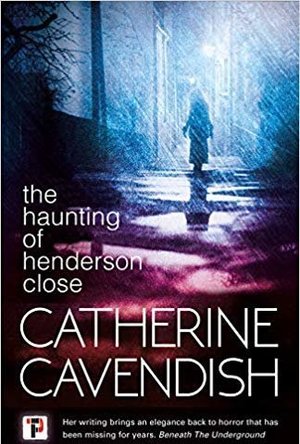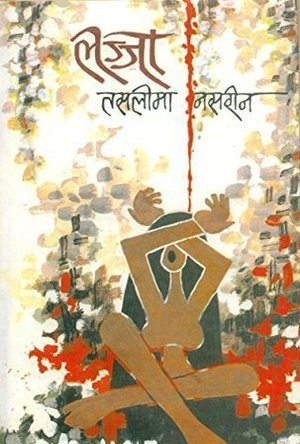Search
Search results
Gail (4 KP) rated Chasing Ever After in Books
Jun 4, 2018
I was so excited to get to read more about this dysfunctional family. In this book we see hope of something new and beautiful. Ace and Sadie have been dancing around the possibilities of an “us” for two years now. Jax and Ky are getting married in Hawaii and it seems like the perfect time for Ace to make a move. Sadie doesn’t trust Ace and she is an ice queen every time he is near. One word from his mouth and she is disgusted. Is that really how she feels or is it a cover for her true feelings?
I have to confess that I was disappointed in how the guys past was held against them. Sure they should’ve been less willing to poke anything but it shouldn’t be used as a tool to make them feel less about themselves. We all have a past and that past shouldn’t be a weapon to hold back our future. Why should I wish to change my past just to win your love and affection? You should accept me for me and if I am showing you how I have changed and continue to change, you shouldn’t be upset about something that happened before I met you and wanted a relationship.
From Sadie's view I didn’t agree with how she handled any of their time together. She was always cold and pushing him away. Yet he stayed and kept trying. I don’t think she appreciated that. Yes she was hurting and man it flipping sucked what happened to her. (Gosh how can you write about so much loss?) But there was nothing in her past that gave me the impression that she couldn’t trust Ace. Yes his past was yuck but for two years the guy was practically your shadow.
I loved his loyalty and his willingness to just keep trying no matter how she tried to shake him off. Sadie had redeeming qualities also they just got overshadowed by her attitude. I haven’t lost a child but I have lost someone I loved. So I feel her pain but it didn’t stop me from loving again. Ace had issues but not enough for me to understand Sadie's side. I’m glad it ended well. If she would’ve dragged him along anymore I would’ve had to slap her. Maybe I missed the point but the whole waiting for sex isn't for everyone.
I have to confess that I was disappointed in how the guys past was held against them. Sure they should’ve been less willing to poke anything but it shouldn’t be used as a tool to make them feel less about themselves. We all have a past and that past shouldn’t be a weapon to hold back our future. Why should I wish to change my past just to win your love and affection? You should accept me for me and if I am showing you how I have changed and continue to change, you shouldn’t be upset about something that happened before I met you and wanted a relationship.
From Sadie's view I didn’t agree with how she handled any of their time together. She was always cold and pushing him away. Yet he stayed and kept trying. I don’t think she appreciated that. Yes she was hurting and man it flipping sucked what happened to her. (Gosh how can you write about so much loss?) But there was nothing in her past that gave me the impression that she couldn’t trust Ace. Yes his past was yuck but for two years the guy was practically your shadow.
I loved his loyalty and his willingness to just keep trying no matter how she tried to shake him off. Sadie had redeeming qualities also they just got overshadowed by her attitude. I haven’t lost a child but I have lost someone I loved. So I feel her pain but it didn’t stop me from loving again. Ace had issues but not enough for me to understand Sadie's side. I’m glad it ended well. If she would’ve dragged him along anymore I would’ve had to slap her. Maybe I missed the point but the whole waiting for sex isn't for everyone.
Gareth von Kallenbach (980 KP) rated The Twilight Saga: Eclipse (2010) in Movies
Aug 8, 2019
The beautiful people of Forks, Washington, are back in the latest installment of the Twilight saga. This time around there’s a little bit more story and a lot more action. Still, not nearly enough of either to make this movie compelling for anyone but diehard fans. Oh, I’m sorry..Twi-hard fans.
Edward Cullen (Robert Pattinson) and Bella Swann (Kirsten Stewart) are reunited and still very much in love, to the brokenhearted dismay of Jacob Black (Tayor Lautner). As Edward and Bella prepare for graduation and contemplate marriage, Victoria, a vengeful vampire now played by Brice Howard, is creating an army to destroy Bella and the Cullen family. Because of this, the Cullen and the werewolves form an uneasy alliance to keep Bella from harm. Bella finds herself struggling with her desire to be with Edward and have him “change” her and her feelings for Jacob. Not your typical teenage angst, but in Bella’s world of vampires and werewolves, these are actually the least of her worries.
Directed by David Slade, of Hard Candy and 30 Days of Night, Eclipse at least makes attempts to flesh out the supporting characters, which helped keep the movie interesting because, honestly, if it just focused on the love triangle of Edward, Bella and Jacob, it would have felt interminably slower. While Pattinson, Stewart and Lautner play tortured, awkward and earnest well, they play it too much. Thank goodness for Chief Swan, portrayed with perfect unease by Billy Burke and the stories of Jasper (Jackson Rathbone) and Rosalie (Nikki Reed) and the first Quileute werewolves.
When there was action, it was fast and furious and and when there was humor it was usually when Jacob was around, but I’m sure there were a couple of funny lines that were missed because of the collective sighs and moans the predominantly female audience emitted every time Jacob graced the screen in all his shirtless splendor. A slowly paced tale that picks up speed towards the end, Eclipse is definitely easier to watch than the previous two movies. While no true Twi-hard will care what critics say about the movie, if you’re on the fence about watching this movie, stay on it, especially if you haven’t read the series or watched the previoius two.
Edward Cullen (Robert Pattinson) and Bella Swann (Kirsten Stewart) are reunited and still very much in love, to the brokenhearted dismay of Jacob Black (Tayor Lautner). As Edward and Bella prepare for graduation and contemplate marriage, Victoria, a vengeful vampire now played by Brice Howard, is creating an army to destroy Bella and the Cullen family. Because of this, the Cullen and the werewolves form an uneasy alliance to keep Bella from harm. Bella finds herself struggling with her desire to be with Edward and have him “change” her and her feelings for Jacob. Not your typical teenage angst, but in Bella’s world of vampires and werewolves, these are actually the least of her worries.
Directed by David Slade, of Hard Candy and 30 Days of Night, Eclipse at least makes attempts to flesh out the supporting characters, which helped keep the movie interesting because, honestly, if it just focused on the love triangle of Edward, Bella and Jacob, it would have felt interminably slower. While Pattinson, Stewart and Lautner play tortured, awkward and earnest well, they play it too much. Thank goodness for Chief Swan, portrayed with perfect unease by Billy Burke and the stories of Jasper (Jackson Rathbone) and Rosalie (Nikki Reed) and the first Quileute werewolves.
When there was action, it was fast and furious and and when there was humor it was usually when Jacob was around, but I’m sure there were a couple of funny lines that were missed because of the collective sighs and moans the predominantly female audience emitted every time Jacob graced the screen in all his shirtless splendor. A slowly paced tale that picks up speed towards the end, Eclipse is definitely easier to watch than the previous two movies. While no true Twi-hard will care what critics say about the movie, if you’re on the fence about watching this movie, stay on it, especially if you haven’t read the series or watched the previoius two.
Kristy H (1252 KP) rated The Happy Ever After Playlist in Books
Oct 8, 2020
Amazingly sexy and sweet romance
Sloan Monroe's fiance, Brandon, died two years ago, and Sloan is still hurting, a lot. Then one day she finds an adorable dog on the road--literally--and takes him home. His owner never answers her texts, and the dog, Tucker, seems to help Sloan move on. Then suddenly Tucker's owner shows up, via text, and he wants Tucker back. But Sloan's strong enough now that she's not giving up Tucker. As she starts texting with Tucker's owner, Jason, she realizes he really cares about his dog. Then Sloan also recognizes that Jason is a good guy. A really good, handsome guy. This is confirmed once they meet in person. But Jason's a musician with stardom just around the corner. Sloan needs someone here, whom she can count on. Can she really handle someone else who might leave her, again?
"I didn't cook anymore. Everyone knew that. I didn't do a lot of things anymore."
I absolutely adored this book. It was just what I needed at the time I picked it up. Jimenez gives us such a happy and sexy romance with two characters with awesome chemistry. There's the best blend of small mix-ups and humor, and you cannot help but root for Sloan and Jason from the very beginning (especially if you've read The Friend Zone). Knowing that Sloan is completely broken from Brandon's death while Jason is confident and embarking on a new career, it's completely understandable that Sloan can't risk losing herself again. Watching her find happiness--even knowing it could be gone again in a second--is beautiful, and both of these characters are so real, so true.
"I'd been lonely and attached to someone invisible for two years. I wouldn't do it again. I couldn't do it again."
While this book is emotional, it's also very sweet, and, wow, sexy at times. Jason is just a darn good guy, seemingly too good to be true, and I found myself willing him and Sloan together, desperately wanting her to get a second chance at happiness. Throw in the adorable Tucker and there's basically nothing not to love about this book. Great characters, great romance, great humor--it's all there. I loved it from beginning to end. 4.5 stars.
"I didn't cook anymore. Everyone knew that. I didn't do a lot of things anymore."
I absolutely adored this book. It was just what I needed at the time I picked it up. Jimenez gives us such a happy and sexy romance with two characters with awesome chemistry. There's the best blend of small mix-ups and humor, and you cannot help but root for Sloan and Jason from the very beginning (especially if you've read The Friend Zone). Knowing that Sloan is completely broken from Brandon's death while Jason is confident and embarking on a new career, it's completely understandable that Sloan can't risk losing herself again. Watching her find happiness--even knowing it could be gone again in a second--is beautiful, and both of these characters are so real, so true.
"I'd been lonely and attached to someone invisible for two years. I wouldn't do it again. I couldn't do it again."
While this book is emotional, it's also very sweet, and, wow, sexy at times. Jason is just a darn good guy, seemingly too good to be true, and I found myself willing him and Sloan together, desperately wanting her to get a second chance at happiness. Throw in the adorable Tucker and there's basically nothing not to love about this book. Great characters, great romance, great humor--it's all there. I loved it from beginning to end. 4.5 stars.
Leanne Crabtree (480 KP) rated Miss Me Not in Books
Sep 3, 2019
Note: This has been on my Kindle for years--literally! I've decided every so often when there's not a book I've bought that I'm just dying to read that I'll start reading my backlog of books from the earliest bought. This was #1 - from 2013. I'm not doing bad, I only have one more book from 2013 before I start the ones from 2014. Yay!
*-*-*-*-*
This covers some rather dark topics like suicide and physical abuse. On the first page we learn of a student's suicide and Madison's feelings about it. And then the fact that she has a sort of suicide pact with her only friend. It's quite a punch to the gut that these 17 year olds feel so low due to family situations that they want to end things.
Madison had a very unconventional childhood with parents who took no notice of her at all and in an effort to gain any sort of attention from them she acted out in the past until the unthinkable happened when she was just 13. I understand how stuff like that can warp you when it happens at such a young age.
Then a ray of light appears in the form of Dean--all round good guy. He's been asked to tutor her so she doesn't flunk a class. He's determined to be her friend after watching her for years and seeing her "fade into the background" behaviour. Things progress from friendship into romance over time and we get a rather sweet romance between Dean and Madison. He's very protective of her.
Of course, things don't always go the way you want and someone close to Madison commits suicide throwing her back into the darkness of grief. Luckily, she now has a strong support system in place with Dean and his family and they manage to keep her grounded.
I thought it ended a little abruptly but it was a sweet young adult romance that covered some hard hitting topics.
Another note: Suicide does seem to be a big issue in teenagers around the world and this book does a good job of highlighting it. It doesn't seem fair to me for teens to be that low that they take their own lives. They've barely started living and they ready to die already? That's not right. I've had a few good cries while reading this.
*-*-*-*-*
This covers some rather dark topics like suicide and physical abuse. On the first page we learn of a student's suicide and Madison's feelings about it. And then the fact that she has a sort of suicide pact with her only friend. It's quite a punch to the gut that these 17 year olds feel so low due to family situations that they want to end things.
Madison had a very unconventional childhood with parents who took no notice of her at all and in an effort to gain any sort of attention from them she acted out in the past until the unthinkable happened when she was just 13. I understand how stuff like that can warp you when it happens at such a young age.
Then a ray of light appears in the form of Dean--all round good guy. He's been asked to tutor her so she doesn't flunk a class. He's determined to be her friend after watching her for years and seeing her "fade into the background" behaviour. Things progress from friendship into romance over time and we get a rather sweet romance between Dean and Madison. He's very protective of her.
Of course, things don't always go the way you want and someone close to Madison commits suicide throwing her back into the darkness of grief. Luckily, she now has a strong support system in place with Dean and his family and they manage to keep her grounded.
I thought it ended a little abruptly but it was a sweet young adult romance that covered some hard hitting topics.
Another note: Suicide does seem to be a big issue in teenagers around the world and this book does a good job of highlighting it. It doesn't seem fair to me for teens to be that low that they take their own lives. They've barely started living and they ready to die already? That's not right. I've had a few good cries while reading this.
Debbiereadsbook (1564 KP) rated Enforcer's Little Warrior (Little Paws Haven #3) in Books
Apr 8, 2025
Bash knows Romy needs to tell him about his past, and he'll wait til Romy is ready.
Independent reviewer for Archaeolibrarain, I was gifted my copy of this book.
This is book 3 in the Little Paws Haven series, and I think you really SHOULD read books one and two before this one. There is an ongoing story arc that is not fully recapped, but you might get enough to muddle through. Just my opinion, it's my review :-)
Romy and Bash know they are mates, but dealing with two little rhinos they found, means getting to know each other is a bit down the list of priorities. They do TRY though. Bash digging a wallow, for example. But then they are hit with a devastating blow, and Romy needs his Little time to fully process the grown up stuff after. And the council is still causing problems!
I loved book one, and book two didn't quite hit the same spot. This book is on a par with book 2. WHY?? I dunno (insert wailing!) and you know I hate not being able to translate what my book brain wants to say!
I liked that it takes time for Romy and Bash to fully commit. They do take their time to get to know each other before mating. The Council and their aptitude for meddling continues, it gets in the way of Romy fully opening up to Bash for a while. Bash knows Romy needs to tell him, and he'll wait til Romy is ready. His hand is pushed though, given what happens and when he tells it all?? Oh my.
It was nice to catch up with Cosmo, Harley and Nomad. Gabai and Asher are mentioned but don't really play a part here. Book 4 is laid out for us as well!
I'm still not 100% certain what the council has been doing, but it is much clearer now, given what the crash of rhinos, along with all the allies, finds.
The steam level is low, I thought, but the drama/danger level is high and there is a bit more violence in this book. I mean, RHINOS!! But I think it was needed for this book.
I'm looking forward for Arlo and Taggert, and what Tagg can find on the computers!
4 very good stars
*same worded review will appear elsewhere
This is book 3 in the Little Paws Haven series, and I think you really SHOULD read books one and two before this one. There is an ongoing story arc that is not fully recapped, but you might get enough to muddle through. Just my opinion, it's my review :-)
Romy and Bash know they are mates, but dealing with two little rhinos they found, means getting to know each other is a bit down the list of priorities. They do TRY though. Bash digging a wallow, for example. But then they are hit with a devastating blow, and Romy needs his Little time to fully process the grown up stuff after. And the council is still causing problems!
I loved book one, and book two didn't quite hit the same spot. This book is on a par with book 2. WHY?? I dunno (insert wailing!) and you know I hate not being able to translate what my book brain wants to say!
I liked that it takes time for Romy and Bash to fully commit. They do take their time to get to know each other before mating. The Council and their aptitude for meddling continues, it gets in the way of Romy fully opening up to Bash for a while. Bash knows Romy needs to tell him, and he'll wait til Romy is ready. His hand is pushed though, given what happens and when he tells it all?? Oh my.
It was nice to catch up with Cosmo, Harley and Nomad. Gabai and Asher are mentioned but don't really play a part here. Book 4 is laid out for us as well!
I'm still not 100% certain what the council has been doing, but it is much clearer now, given what the crash of rhinos, along with all the allies, finds.
The steam level is low, I thought, but the drama/danger level is high and there is a bit more violence in this book. I mean, RHINOS!! But I think it was needed for this book.
I'm looking forward for Arlo and Taggert, and what Tagg can find on the computers!
4 very good stars
*same worded review will appear elsewhere
Merissa (13419 KP) rated Face of the Wave (Ryder Bay #3) in Books
Apr 1, 2019
Face of the Wave (Ryder Bay #3) by Jordan Ford
Face of the Wave is the third book in the Ryder Bay series, and we finally find out what happened with Skylar. She comes round at the beginning of the book, and is understandably very confused. She goes along with how her parents, and everyone, expect her to be, but she knows something isn't right. She just can't figure out what it is yet. Jed has been there for Skylar whilst she was in a coma, but now she's awake, Jed is sure she won't want someone like him.
This book deals with some serious issues, that I thought were excellently written. Skylar not only has her physical recovery to deal with, but she also has to figure out the black hole in her mind, plus decide on how she wants to be around others. The new group take her under their wings, and with Jed's help, Skylar is prepared to tell all.
I thoroughly enjoyed this book, and I'm so very glad my guess of the 'big bad' was correct! However, I did feel that Skylar's problem (while HUGE) actually overshadowed the romance part with Jed. Although I can see them as incredibly good, close, friends. I just can't see them as a couple. That saddens me, as I really wanted Jed to get his HEA, and he does. He does get it here, but for the first time ever with one of Ms. Ford's books, I just don't get it.
Even though this story didn't quite work for me, I still have no hesitation in recommending it! Remember, this is just my opinion, and I am sure many out there will think differently. A fantastic story, great characters, and wonderful scenery! Go on, try this series for yourself.
* A copy of this book was provided to me with no requirements for a review. I voluntarily read this book, and the comments here are my honest opinion. *
Merissa
Archaeolibrarian - I Dig Good Books!
This book deals with some serious issues, that I thought were excellently written. Skylar not only has her physical recovery to deal with, but she also has to figure out the black hole in her mind, plus decide on how she wants to be around others. The new group take her under their wings, and with Jed's help, Skylar is prepared to tell all.
I thoroughly enjoyed this book, and I'm so very glad my guess of the 'big bad' was correct! However, I did feel that Skylar's problem (while HUGE) actually overshadowed the romance part with Jed. Although I can see them as incredibly good, close, friends. I just can't see them as a couple. That saddens me, as I really wanted Jed to get his HEA, and he does. He does get it here, but for the first time ever with one of Ms. Ford's books, I just don't get it.
Even though this story didn't quite work for me, I still have no hesitation in recommending it! Remember, this is just my opinion, and I am sure many out there will think differently. A fantastic story, great characters, and wonderful scenery! Go on, try this series for yourself.
* A copy of this book was provided to me with no requirements for a review. I voluntarily read this book, and the comments here are my honest opinion. *
Merissa
Archaeolibrarian - I Dig Good Books!
Goddess in the Stacks (553 KP) rated Fire and Heist in Books
Apr 2, 2019
I picked this up off the library shelf for the title; I took it home for the description. Were-dragon thieves? Awesome. It turns out it's not that simple. For one, the were-dragons have lost the ability to transform over the years - the last dragon to transform was Sir Francis Drake, and the book is set in modern times, so, at least a couple hundred years have passed. And humans know the were-dragons exist! I suppose without the ability to transform, they're little more than rich celebrities with parlor tricks. (Immune to fire to certain temperatures, ability to breathe fire.) What humans don't know is how much the wyverns tend to steal to enrich their hoards. And that some of them can do limited magic.
We open on Sky, sixteen, rattling around her mansion, dealing with her now dysfunctional family of three brothers and their father. Her mother went missing not very long ago, during a heist. The kids have been told she's gone, she's alive, she's not coming back, and to drop the matter. Were-dragon society almost exiled all of them for whatever their mother got into, so they're all on thin ice. Sky, of course, is having none of this. When she stumbles on a lead for where her mother went, she pursues it, and learns all kinds of secrets.
The book was okay, I suppose. I was a little appalled at were-dragon society, and that the dragons just - bow to the authority of the Council. Dragons should have more spine. The heist part was pretty cool, with Sky and her friends figuring out how to take apart every layer of security piece by piece.
I don't know. It was a fluffy book, but not a feel-good book, and I just wasn't that enthused.
You can read all my reviews at http://goddessinthestacks.com
We open on Sky, sixteen, rattling around her mansion, dealing with her now dysfunctional family of three brothers and their father. Her mother went missing not very long ago, during a heist. The kids have been told she's gone, she's alive, she's not coming back, and to drop the matter. Were-dragon society almost exiled all of them for whatever their mother got into, so they're all on thin ice. Sky, of course, is having none of this. When she stumbles on a lead for where her mother went, she pursues it, and learns all kinds of secrets.
The book was okay, I suppose. I was a little appalled at were-dragon society, and that the dragons just - bow to the authority of the Council. Dragons should have more spine. The heist part was pretty cool, with Sky and her friends figuring out how to take apart every layer of security piece by piece.
I don't know. It was a fluffy book, but not a feel-good book, and I just wasn't that enthused.
You can read all my reviews at http://goddessinthestacks.com
Whatchareadin (174 KP) rated The Girl on the Train in Books
Apr 9, 2019
Rachel Watson rides the train every day to a job she was fired from months ago. She spend the day in the city until it is time to go home again. As she passes the town of Witney, she always looks at two houses on Blenheim Road. Number 15 and number 23. Rachel used to live at 23 Blenheim Road with her husband Tom. But that was 2 years ago. Now she lives in a flat with her friend Cathy in Ashbury. Number 15 is occupied by Scott and Megan Hipwell who Rachel likes to refer to as Jess and John. Rachel enjoys watching Megan and Scott and their happy life together, so much unlike her own. Until one day, she sees something she knows she shouldn't have and then the next day Megan is reported missing. Could the information she have be the key to the investigation? Will the investigators believe her, or will they think she is just a lonely, drunkard who will try anything to get closer to her ex and his new wife.
I have been waiting to read this book for a very long time. It has been on my hold list at the library for about 4 months. I couldn't put it down. It kept me on the edge of my seat and I had to know what was going to happen next. There were a lot of shocking things about this book that makes you want to know who the culprit was. Who has Megan and what have they done with her? There were times where I was a bit confused about the different dates. The book goes from present to past from chapter to chapter and from person to person. I found myself flipping back to see where I was in the story to keep myself straight.
Overall, this is a good book. One that I will recommend over and over. It's a great thriller that you will not want to put down.
I have been waiting to read this book for a very long time. It has been on my hold list at the library for about 4 months. I couldn't put it down. It kept me on the edge of my seat and I had to know what was going to happen next. There were a lot of shocking things about this book that makes you want to know who the culprit was. Who has Megan and what have they done with her? There were times where I was a bit confused about the different dates. The book goes from present to past from chapter to chapter and from person to person. I found myself flipping back to see where I was in the story to keep myself straight.
Overall, this is a good book. One that I will recommend over and over. It's a great thriller that you will not want to put down.
Billie Wichkan (118 KP) rated The Haunting of Henderson Close in Books
May 22, 2019
The Haunting of Henderson Close
Hannah has relocated to Edinburgh and now works as a performing tour guide regaling tourists with the goings on in the spooky derelict Henderson Close. Together with colleagues they bring the past to life as they play the parts of real people who lived there and spin tales of the spooky and historical past, some really gruesome. But then she starts to see shadows, she has flashes where she feels weird and, well, has some really rather scary experiences. But she's not alone, one of the other guides has experienced similar and then some of the tourists also start to see things. What is happening? Are the legends and stories of what went before coming back? Who are the people that Hannah keeps seeing, and what do they really want?
I was intrigued by the classification of The Haunting of Henderson Close as a horror, mystery and thriller novel as these are my favourites.
I loved all the hints at ghosts and supernatural activity but sadly it all got a bit confusing for me as it progressed. The flashbacks and present just seemed to clash and not move seamlessly together. At times I felt possibly the author meant for the book to be more of a Victorian mystery rather than supernatural.
The use of location was one of the main strengths of the book, as the descriptions of 19th century Edinburgh were detailed and made it easy to imagine just what Victorian Scotland used to look like; really amazing and descriptive.
The ending I found a bit lacking as I had an idea built u in my of something climatic and it wasn’t.
The story itself intrigued me, the setting especially; all in all, a story that kept my attention nicely throughout and left me mostly satisfied at its conclusion.
My thanks go to the Publisher and Netgalley for the chance to read this book.
Hannah has relocated to Edinburgh and now works as a performing tour guide regaling tourists with the goings on in the spooky derelict Henderson Close. Together with colleagues they bring the past to life as they play the parts of real people who lived there and spin tales of the spooky and historical past, some really gruesome. But then she starts to see shadows, she has flashes where she feels weird and, well, has some really rather scary experiences. But she's not alone, one of the other guides has experienced similar and then some of the tourists also start to see things. What is happening? Are the legends and stories of what went before coming back? Who are the people that Hannah keeps seeing, and what do they really want?
I was intrigued by the classification of The Haunting of Henderson Close as a horror, mystery and thriller novel as these are my favourites.
I loved all the hints at ghosts and supernatural activity but sadly it all got a bit confusing for me as it progressed. The flashbacks and present just seemed to clash and not move seamlessly together. At times I felt possibly the author meant for the book to be more of a Victorian mystery rather than supernatural.
The use of location was one of the main strengths of the book, as the descriptions of 19th century Edinburgh were detailed and made it easy to imagine just what Victorian Scotland used to look like; really amazing and descriptive.
The ending I found a bit lacking as I had an idea built u in my of something climatic and it wasn’t.
The story itself intrigued me, the setting especially; all in all, a story that kept my attention nicely throughout and left me mostly satisfied at its conclusion.
My thanks go to the Publisher and Netgalley for the chance to read this book.
I had such high hopes for this...
I really wanted to like this book. The idea of it is a really good one: you are the size of your bank balance. So, if you are very poor, you’re tiny (about the size of a rat) and if you’re ridiculously rich, you’re taller than a sky scraper: and there are all the sizes in between. The bank is in charge of either making you bigger or smaller.
Warner and Prayer are ‘Littles’ and live a hard life, trying to avoid being stood on, eaten by cats or generally being injured in any way (hospitals can’t treat them). Prayer decides that she wants to ‘Upscale’ by finding herself a Middle scale Law student to marry, and so their adventures begin.
Now, Littles are rarely educated, or are minimally so, and this is where MY difficulties with this story began (right at the beginning, truth be told). The language. It’s written phonetically most of the time: words join with others, into longer, difficult to understand words, there are some words that are made up for the purposes of the story (munmun being one such). Sentences seem to be either overlong or very short. I had to concentrate really hard on this (for the record, I’ve read A Clockwork Orange and Ridley Walker, and coped just fine!). I know this is a YA book, and the main character is a child (14/15 years old), and perhaps the author was trying to convey this in the way the language came across. To me, he seemed a bit hyperactive, unable to concentrate, frenzied, a bit dim-witted in some things and really clever with others. Perhaps this was to emulate his lack of education and his youth? I don’t know. Honestly, it was something of a relief to finish it.
However, I DID like the ending - it was fitting. It’s just the journey to get there was pretty arduous!
Warner and Prayer are ‘Littles’ and live a hard life, trying to avoid being stood on, eaten by cats or generally being injured in any way (hospitals can’t treat them). Prayer decides that she wants to ‘Upscale’ by finding herself a Middle scale Law student to marry, and so their adventures begin.
Now, Littles are rarely educated, or are minimally so, and this is where MY difficulties with this story began (right at the beginning, truth be told). The language. It’s written phonetically most of the time: words join with others, into longer, difficult to understand words, there are some words that are made up for the purposes of the story (munmun being one such). Sentences seem to be either overlong or very short. I had to concentrate really hard on this (for the record, I’ve read A Clockwork Orange and Ridley Walker, and coped just fine!). I know this is a YA book, and the main character is a child (14/15 years old), and perhaps the author was trying to convey this in the way the language came across. To me, he seemed a bit hyperactive, unable to concentrate, frenzied, a bit dim-witted in some things and really clever with others. Perhaps this was to emulate his lack of education and his youth? I don’t know. Honestly, it was something of a relief to finish it.
However, I DID like the ending - it was fitting. It’s just the journey to get there was pretty arduous!

